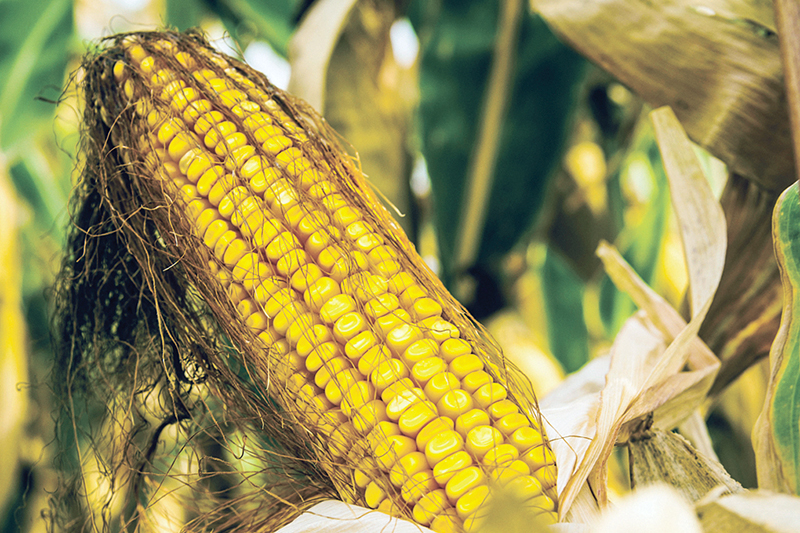By Ashley Knapton, B. Sc (Agr), CCA-ON
AgriNews Contributor
When looking to manage the quality of our corn silage, there are a few things to consider; the first, is things that are outside of our control – namely, environment. Growing conditions have a huge influence on several of the factors that we look at when considering forage quality like fibre digestibility or starch content in corn silage. If we can understand what is beyond our control, we can use that information to better manage our quality goals using tools like maintaining plant health and altering chop height.
Fibre digestibility in non-BMR hybrids has minimal variation through genetics but is very influenced by the growing conditions prior to tassel. In years where we see below average rainfall, corn silage will have higher than normal neutral detergent fibre digestibility (NDFD). We see this same phenomenon in alfalfa as well, where droughty conditions cause a reduction in yield but an increase in digestibility. This increase in digestibility is a function of the plant conserving resources until conditions return to normal. The plant slows down its processes, which increases the proportion of carbohydrates that are not fibre. We also see shorter plants in drought situations meaning the leaf: stem ratio is increased, also positively impacting digestibility. If conditions are cool in addition to droughty, the plant will refrain from making a secondary cell wall that also will have a positive impact on digestibility.
If we switch gears and think about factors that impact fibre digestibility in corn silage and are within our control, the first that comes to mind is late season plant health. In cases where corn plants are diseased and the leaves are beginning to cannibalize themselves, we see a higher level of undigested NDF (uNDF) and less overall fibre digestibility. As a disease like Northern Corn Leaf Blight progresses on the leaf surface, it will utilize more of the digestible portions of the plant including sugars and good fibres, concentrating more of the indigestible ingredients. Ensuring that we select agronomically strong hybrids and work toward maintaining healthy plants near the end of the season, is an important management strategy to ensure good digestibility. The other important reason to maintain a healthy corn plant at the end of the season is the ensure adequate grain fill and dry down. Despite the plant’s appearance, whole plant moisture is driven by the conversion of sugars to starch in the cob. A green, healthy plant will help to continue that dry down and starch conversion process, while maintaining fibre quality.
Another thing that can alter NDFD is chop height at harvest. By raising the height at which we chop our corn silage, we can increase our starch concentration as well as increase our NDFD by leaving more of the bottom of the stalk behind. The lower portion of the stalk is generally more fibrous and not particularly digestible when compared to the middle and upper internodes. It is important to remember that for every inch increase in chop height, we are leaving 300 pounds of feed (at 35% dry matter) behind in the field. A good management practice with chop height is to send samples two weeks before harvest to determine if the increase in chop height is worth the yield loss. Cut a sample of five plants at your normal chop height and then cut another five plants at an increased height, 8” to 12” higher. The advantages of increasing chop height will vary depending on the moisture received during the growing season, as well as from hybrid to hybrid, so sending samples away every year will help to tease out instances where there is no advantage in digestibility. There are two situations where increasing chop height is not recommended – in fields of BMR corn silage, where the digestibility is already significantly higher because of genetic differences, and on farms where feed frequently runs short. It is more important in those cases to produce enough corn silage for the year, than to increase the digestibility.
One of the most important things to consider when looking at increasing the digestibility of your corn silage, is to chat with your nutritionist about what they are seeing in terms of fibre needs and the quality of your other forages that are in the ration. Highly digestible feeds bring significant advantages to the cow and to your bottom line but there can be a limit. Take stock of the digestibility of your haylage so you can be prepared to manage for more digestible corn silage.













